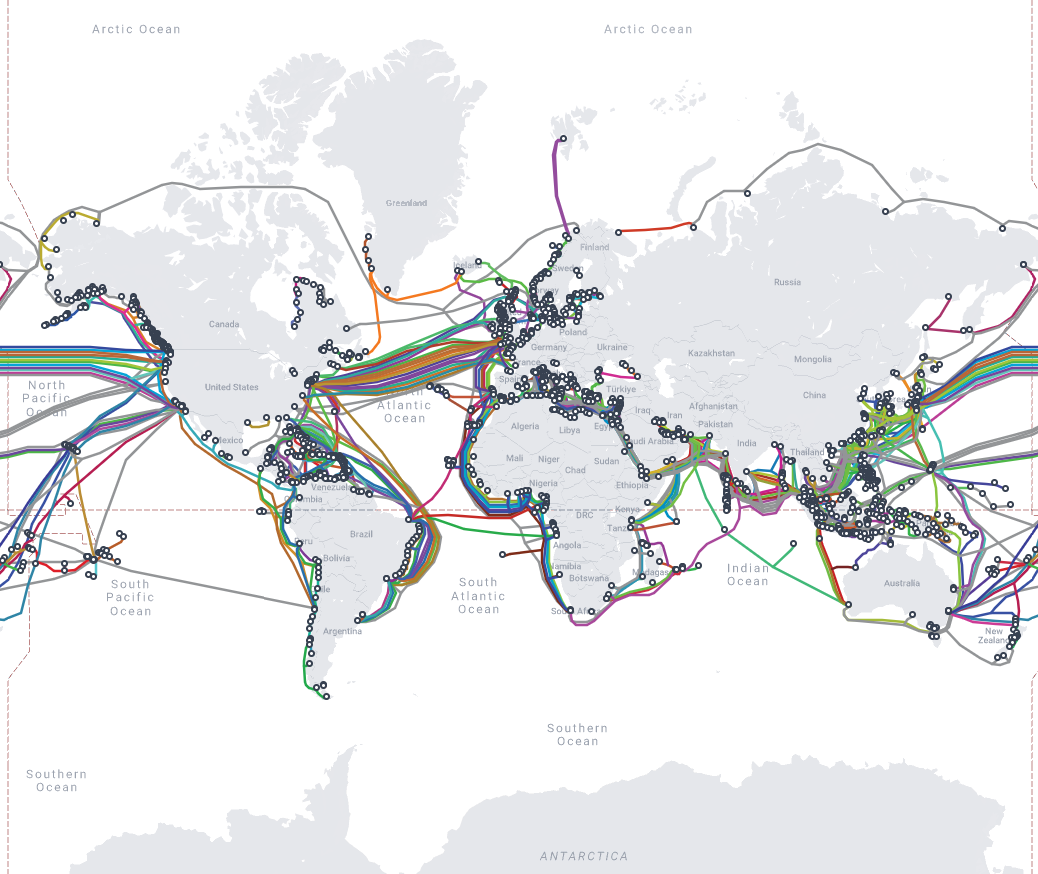The intricate web of undersea internet cables silently powers the digital world, connecting continents and facilitating global communication. However, recent events in the Red Sea have highlighted the vulnerability of this vital infrastructure. In an exceptionally rare incident, three major undersea cables have been damaged, disrupting internet services across Asia, Europe, and the Middle East. Let's delve deeper into the implications of these cuts and explore the significance of undersea internet cables.
 Source: Submarine Cable Map
Source: Submarine Cable Map
Understanding Undersea Internet Cables:
Undersea internet cables, also known as submarine cables, are the backbone of international internet connectivity. The majority of these cables are durable fiber-optic cables, as well as some coaxial cables which still remain active today, laid on the ocean floor, connecting continents and enabling the transmission of vast amounts of data at high speeds. Fibre cables still require electricity to repeat the signal, so coaxial remains a safe and effective backup. These cables play a crucial role in global telecommunications, facilitating everything from email communication to high-definition video streaming.
The recent disruption in the Red Sea highlights the reliance of countries on these undersea cables for their internet connectivity. The incident underscores the importance of maintaining and protecting this critical infrastructure.
Impact of the Red Sea Cable Cuts
The damage to the undersea cables in the Red Sea has caused significant disruptions to internet services across several regions. Reports indicate that up to 25% of internet traffic in affected areas has been impacted, leading to noticeable degradation in service quality. While no country has been completely disconnected from the internet, countries like India, Pakistan, and parts of East Africa have experienced notable disruptions.
The timing and severity of the outage raise concerns, particularly given the ongoing conflict in the Middle East. The involvement of Houthi rebels in the region has further complicated the situation. Repairing the damaged cables is expected to be a challenging task, with factors such as permit issues, adverse weather conditions, and the civil war in Yemen potentially delaying the process.
The Importance of Redundancy and Resilience
The disruption caused by the Red Sea cable cuts highlights the importance of redundancy and resilience in global internet infrastructure. To mitigate the impact of such incidents, internet service providers often rely on redundant routes and backup systems.
Additionally, ongoing efforts to diversify internet connectivity options, such as the development of alternative routes and satellite-based communication systems, are crucial for ensuring uninterrupted internet access in times of crisis. However, around 95-98% of all international internet traffic flows through undersea cable, "It is a common misconception that most global communication is accomplished via satellite. In fact, over 95 percent of international data and voice transfers are currently routed through the many fiber optic cables that crisscross the world’s seafloors." (NOAA, 2024)
Risks of Big Tech Service Outages and Cloud Dependency
In addition to the disruption of internet services, the Red Sea cable cuts have also affected various Big Tech services, leading to widespread outages. This underscores the risks associated with relying solely on cloud-based solutions for critical operations. Organisations that depend heavily on cloud services may experience significant disruptions during events like these, highlighting the importance of having on-premises backups and contingency plans in place.
Looking Ahead
As efforts to repair the damaged cables continue, it is essential to prioritise the resilience and security of undersea internet infrastructure. Collaboration between governments, telecommunications companies, and international organisations is key to addressing the challenges posed by such incidents effectively. By investing in robust infrastructure and implementing proactive measures, we can safeguard the connectivity that has become essential to our interconnected world.
The recent cable cuts in the Red Sea serve as a stark reminder of the vulnerability of undersea internet cables and the importance of protecting this critical infrastructure. As we navigate the complexities of an increasingly digital world, it is imperative to recognise the significance of undersea cables and work towards ensuring their resilience and security.
Sources
NOAA, 2024. Available from: https://www.noaa.gov/submarine-cables
Submarine Cable Map, 2024. Available from: https://www.submarinecablemap.com
If you or your organisation require guidance on cloud dependency, resillience plans, or further support with your cyber security, do not hesistate to get in touch with our team for a free evaluation.

 Ed Nevard
Ed Nevard
